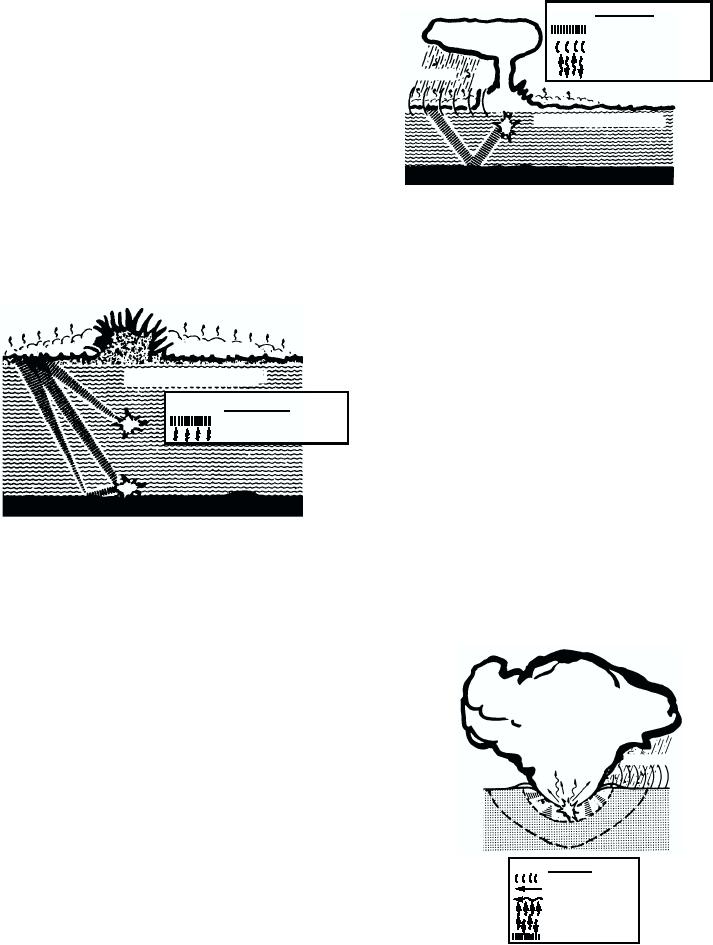
shock and a water plume which then causes a base
surge. Bursts with very shallow points of detonation
can also produce air blast, initial nuclear radiation,
EFFECTS
fallout, and possibly some thermal radiation. These
UNDERWATER SHOCK
effects will be reduced in magnitude from those of a
AIR BLAST
wa t e r s u r fa c e bu r s t a n d w i l l b e c o m e r a p i d l y
TRANSIT RADIATION
FALLOUT
insignificant as the depth of the point of detonation is
BASE SURGE
increased. The range of damage due to shock is
CONTAMINATED WATER
increased as the depth of the point of detonation is
increased. For a given weapon yield, greater hull and
machinery damage will be produced by shock from an
underwater burst than by air blast from an airburst or a
DCf1005
s u r fa c e bu r s t . T h e r eve r s e i s t r u e f o r t o p s i d e
equipment, such as antennas and missile launchers.
Figure 10-5. Deep underwater burst.
UNDERGROUND BURST
An underground burst (fig. 10-6) is a burst where
CONTAMINATED WATER
the point of detonation is below the surface of the
EFFECTS
ground. An underground burst produces a severe earth
UNDERWATER SHOCK
shock, especially near the point of detonation. Thermal
TRANSIT RADIATION
radiation, air blast, initial nuclear radiation, and fallout
will be negligible or absent if the burst is confined below
the surface of the earth. For shallow underground bursts,
the air blast, thermal radiation, and initial nuclear
radiation will be less than for a ground surface burst.
DCf1004
Ground shock will cause damage within about three
crater radii but little beyond. Early fallout can be
significant, and at distances near the explosion base
Figure 10-4. Underwater burst.
surge (evidenced by a dust cloud) will be an important
hazard.
When a high-yield weapon is detonated in deep
water (fig. 10-5) adjacent to a continental shelf, large
breaking waves can be generated by the upsurge along
the shelf slope. These waves will appear on the
shallow-water side of the shelf edge. They are
FALLOUT
characterized by a long period with a sharp, possibly
breaking, crest. They dissipate in amplitude as they
progress toward the shore. Calculations and simulation
experiments were conducted with the continental shelf
EFFECTS
off the east coast of the United States. They indicate
AIR BLAST
THERMAL RADIATION
that in the near vicinity of the shelf edge
INITIAL RADIATION
DEPOSIT RADIATION
(shallow-water side only), these waves may be large
TRANSIT RADIATION
EARTH SHOCK
enough to damage the largest combatant ships and to
DCf1006
Figure 10-6. Underground burst.
swamp or capsize smaller ships.
10-4

